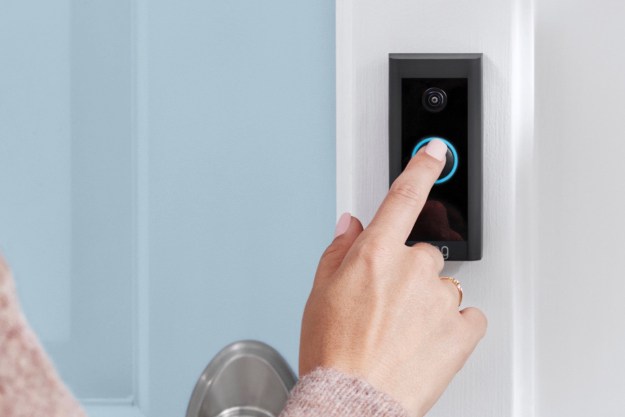
In an era when smart smoke detectors can tell burnt toast from fire and smart thermostats know you’re not home, it only made sense for your windows to undergo an upgrade too.
“Everyone is focused on energy efficient appliances, but no one looked at the windows,” said Rao Mulpuri, CEO of View Dynamic Glass. “We make windows into energy-efficient appliances too. And we eliminate the need for blinds and curtains.”
A digital glass-and-curtain hybrid, it lets in the light but deflects the sun’s infrared radiation.
View Dynamic Glass recently launched a new generation of its double-pane window glass, which dims on demand to any of four different levels. Office occupants can pre-program their preferences into the building management system or adjust from their mobile devices. A digital glass-and-curtain hybrid, it lets in the light but deflects the sun’s infrared radiation – you might better know it as heat.
Smart glass owes its existence to a smart idea: electrochromic materials that change color when they absorb or release electrons, says Mulpuri, who has a Ph.D. in material engineering and 25 years of experience in the field. To get the effect, the glass is painted with layers of electrochromic materials and semiconductors, Mulpuri told Digital Trends. When an electric charge is applied, ions—positively charged particles—travel across the coating, grabbing or releasing electrons from the atoms. “When ions move in one direction, the glass becomes more tinted, when they move in another direction the glass becomes clearer,” Mulpuri says.
Making glass smarter takes work. Panes have to go through a plasma chamber where they are heated to 700 degrees centigrade, and the layers are painted using a vapor-deposition method—a technique in which materials are sputtered onto a surface at high temperatures, forming a very thin film. “Our paint is one micrometer thin,” says Mulpuri. “That’s fifty times thinner than a human hair.”
This technology is different from most competitors, Mulpuri said — other products make the glass opaque while still letting in the heat, which is a critical component to green buildings. By cutting the heat, View Glass can reduce annual HVAC (heating, ventilating and air conditioning) costs by 20 percent without obscuring the view and eliminating the need for mechanical blinds. And it’s fully dynamic because it can be programmed to automatically adjust its dimness to the amount of sunshine that buildings get during different times of day or year. “We call it a smart glass because you can program it to track the sun, to dim to a certain level, all based on changing conditions,” Mulpuri said.
“Our paint is one micrometer thin — fifty times thinner than a human hair.”
“When the sun’s out in San Francisco, which is very frequently where we are, it creates too much heat in the building,” he said. The company decided on a stylish 1935 building with large skylights on the second floor. Skylights are a problem, however; they let in a lot of sun glare and heat. “The space was very, very hot. If we couldn’t solve the problem, we wouldn’t take the building.”
When installed, each smart pane is wired to a controller that sends an electrical current through the glass. Dimming settings can be preprogrammed or users can customize them from their app. Different panes can dim to different levels and at different times—essentially to the occupants’ whim. “We are very happy with controllability,” says Van der Linder. “There’s no other product like this on the market.” View Glass has done about 100 installs in North America, including NASA’s Sustainability Base building and several hospitals that prefer large glass walls; pleasant views improve patients’ wellbeing, after all.
“One way to control the glass is with a photo cell on the roof,” said Daniel R. Pickett, partner at Moody Nolan, an architectural design firm in Columbus, which recently completely two View Glass installs—a 3,080 square feet skylight for Connor Group in Dayton, Ohio, and a series of glass walls totaling 37,000 square feet in Monroe, Louisiana, for CenturyLink. “In the early morning when the sun is coming up, the glass façade would be blasted with sunlight, so you may want to have more tint,” says Pickett. “As sun gets higher, after 10-11 a.m. and as it travels across the sky, the windows will lighten up.”
Is there a catch? Nothing smart is cheap. Glass is no exception. “There’s a premium cost associated with this technology,” Pickett told Digital Trends, but as the energy savings become apparent, he sees the demand for View Glass increasing. Van der Linder hopes that his office will become first net zero-certified building in San Francisco once the required 12-month period is over. “Once the savings are documented, the owners will be able to justify the increased cost,” says Pickett, adding that once manufacturing techniques are improved, the cost will come down too. That may bring View Glass to apartment buildings and homes.
And then one day, instead of pulling at curtains, we’ll all dim our bedroom windows without ever getting out of bed — just like clicking through channels on our smart TVs.
Editors' Recommendations
- How to convert your window blinds into smart blinds
- What is IFTTT and how can you use it in your smart home?
- Alexa can now tell you when a package is delivered
- Amazon’s air quality sensor can tell you when indoor air is dirty
- When standing isn’t enough, the NextErgo will have you doing yoga at your desk


